MQTT.fx Extras - HiveMQ MQTT Toolbox
MQTT.fx aims to be a quick and easy-to-use desktop tool for MQTT debugging and testing. For about 10 years, it is continuously extended (and bug-fixed) by Jens Deters. The first part of this blog post was an overview of the major features of MQTT.fx 5.7.0. In this blog, we cover more about MQTT.fx.
Overview of MQTT.fx
| Attribute | MQTTBox |
|---|---|
| Type | Graphical user interface, JavaFX-based |
| License | Apache 2.0 license |
| Operating Systems | Mac OSX, Windows and Linux |
| Website | https://mqttfx.jensd.de/ |
The version 5.7.0 includes:
MQTT Namespace Explorer
Sparkplug Message Explorer & Editor
Payload Editor
Connection Profiles for different setups of MQTT broker connections
Publish/Subscribe functionality
Username/password authentication
SSL/TLS support
Published messages history
Scripting support via GraalVM JS Engine
Logging Console
$SYS-Topics / Broker Status (HiveMQ & Mosquitto)
Clipboard for predefined messages
Ad-hoc connections
Topic Collector & Explorer
Proxy-support
Bundled installers for all platforms
Update check
Free! (Apache 2.0 license)
MQTT.fx: A Closer Look
Preferences
For instance, the “Application” tab of the settings dialog allows you to keep all detached tabs always on top. So they won’t be hidden by other windows in the foreground. Also, the check for updates at the application start can be controlled here.
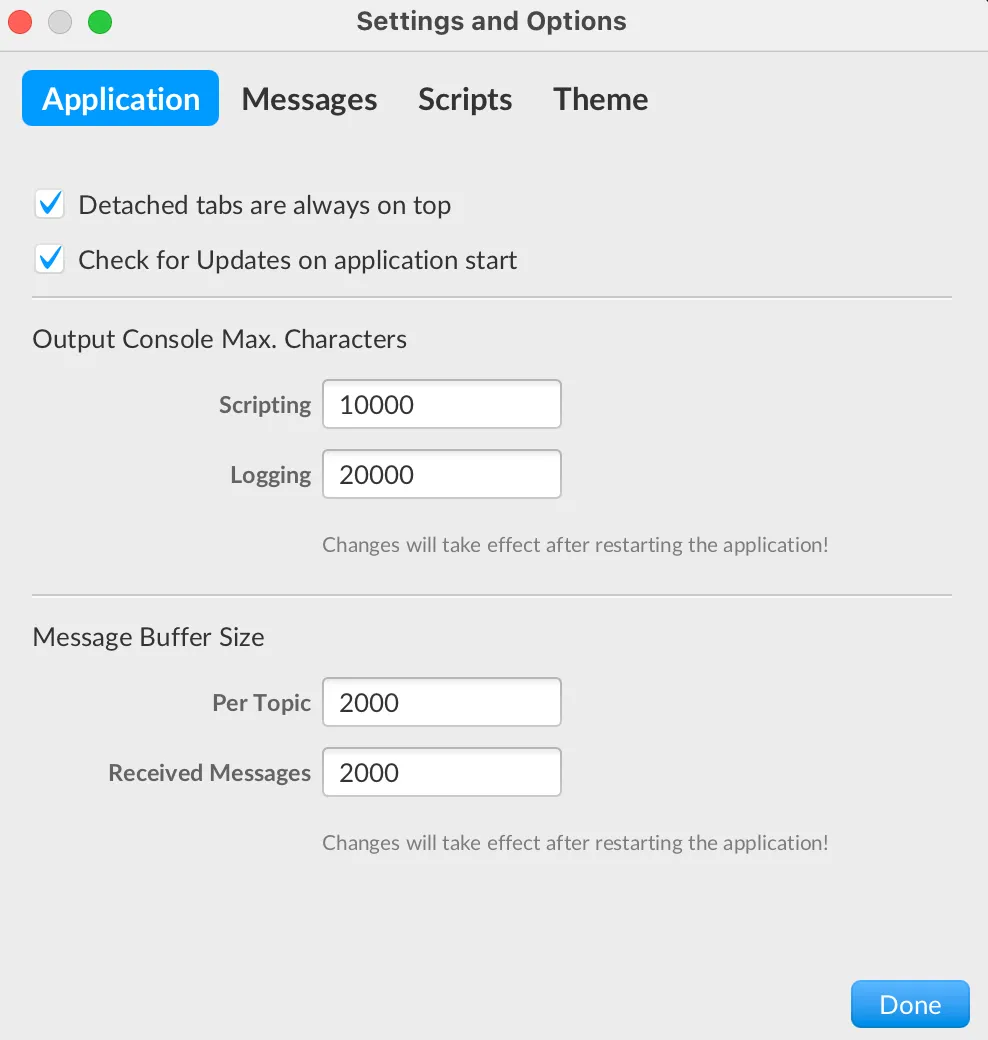
Publishing on MQTT.fx with QoS
In addition to the publish topic the QoS level can be chosen and whether the message should be sent “retained” (when a new client is subscribed to this topic it receives all the previously published messages).
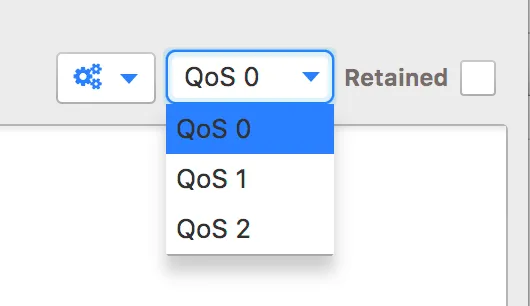
Read MQTT Essentials Part 6: Quality of Service 0, 1 & 2 to learn more about MQTT QoS levels.
| Level | Means | Cool |
|---|---|---|
| QoS 0 | At most once | “fire and forget”: A message won’t be acknowledged by the receiver or stored and redelivered by the sender. Use this level, e.g. with ambient sensor data where it does not matter if an individual reading is lost as the next one will be published soon after. |
| QoS 1 | At least once | A message will be delivered at least once to the receiver. Messages are assured to arrive but duplicates may occur. |
| QoS 2 | Exactly Once | Message are assured to arrive exactly once. Use this level when duplicate or lost messages could lead to incorrect conditions. |
Also, the topic drop-down can be cleared via the “gears” menu.
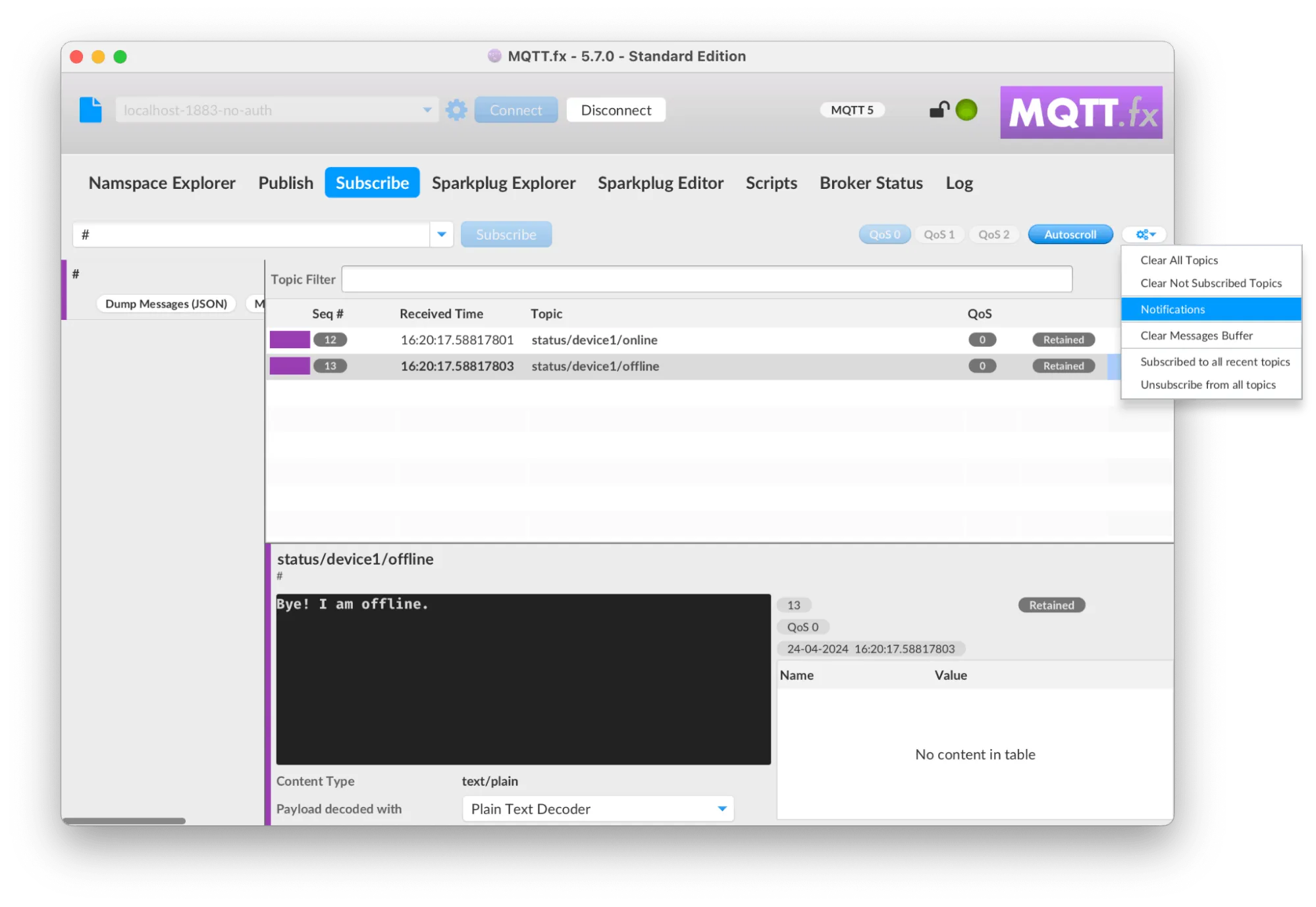
Saving Messages With MQTT.fx Messages Clipboard
Messages can be stored for re-use on the “Messages Clipboard.” Stored messages are saved with the Connection Profile. Thus each profile has its own space of saved messages.
Store a Message
To store a message simply choose “Add to Messages Clipboard” in the context menu of the message area:

and enter a logical name for the message.
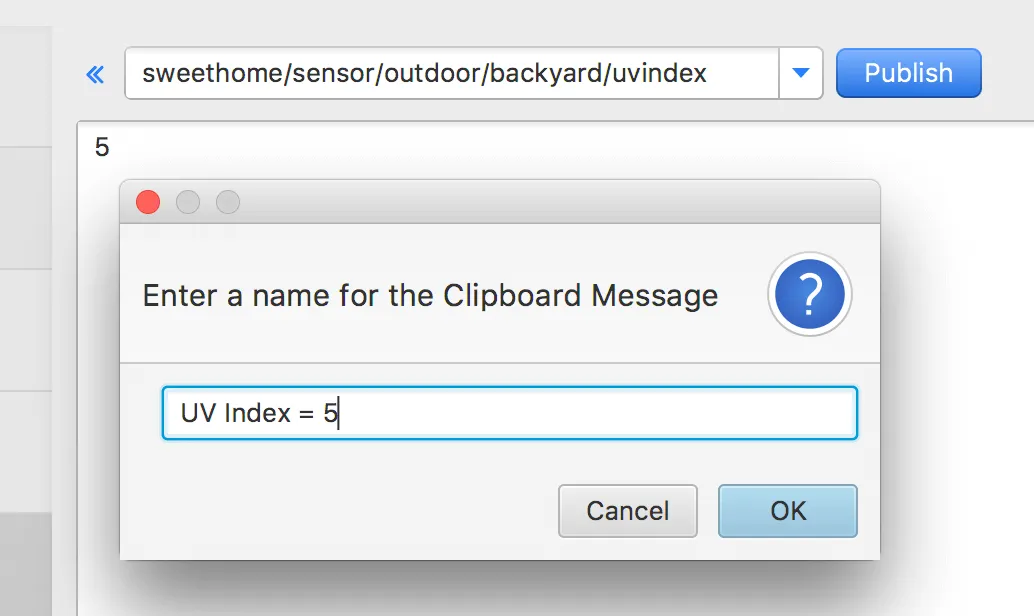
A new message tile is created and the button to send the message is labeled according to the entered logical name.
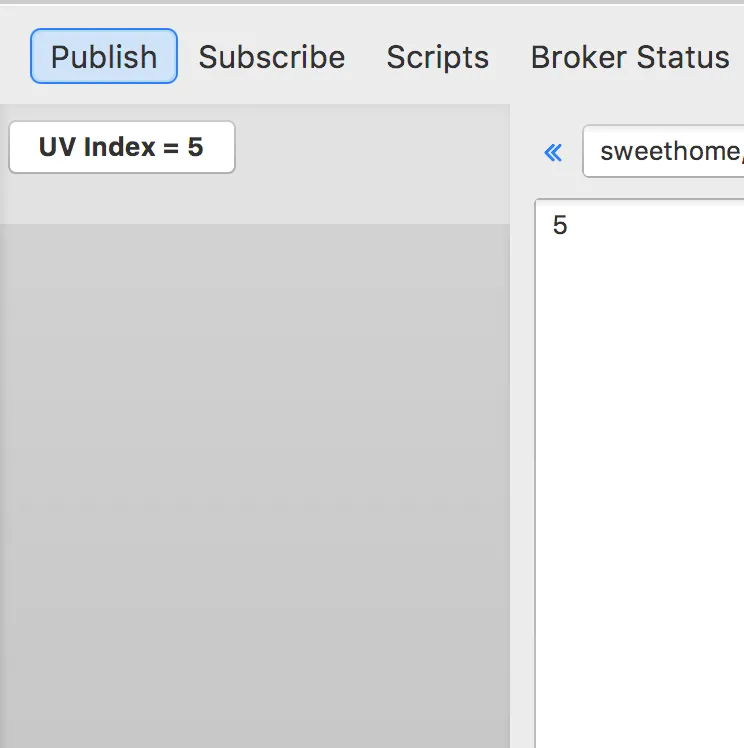
When you hover over a Clipboard Message, some options for modifications become visible.
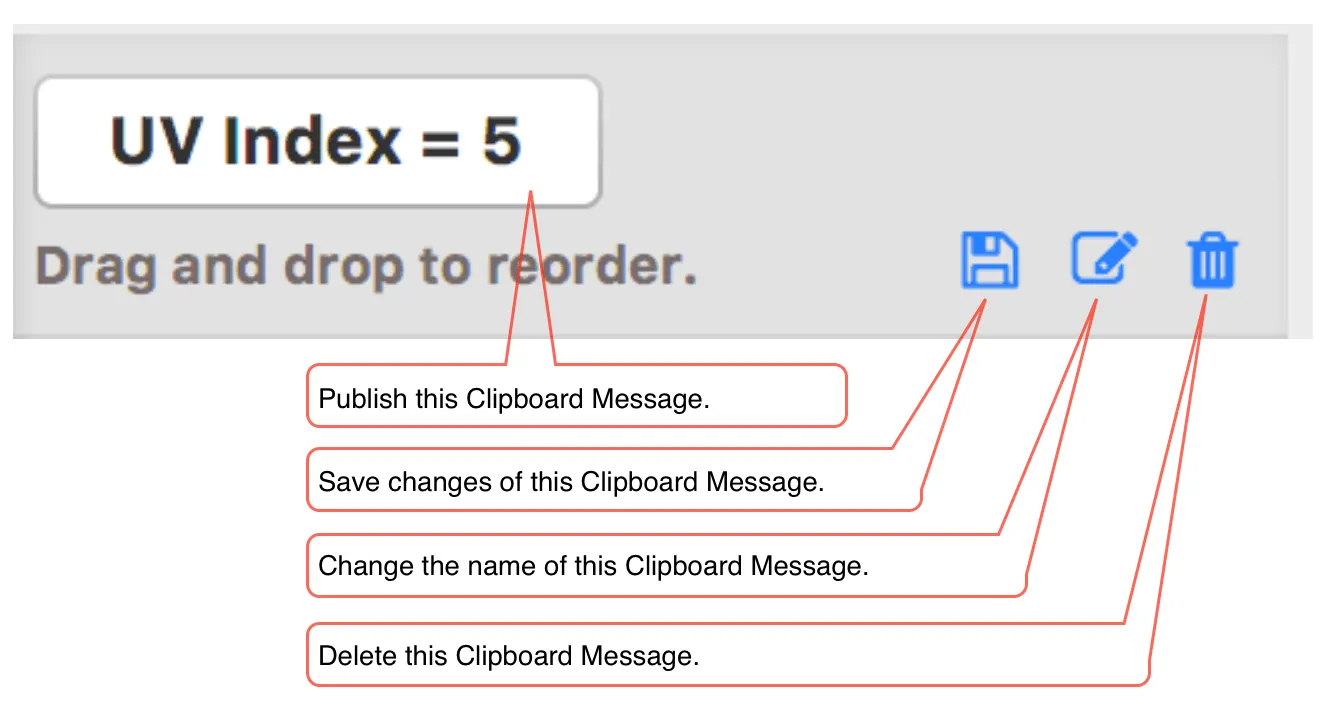
See the MQTT.fx Message Clipboard in Action
Topic Subscription With MQTT.fx
A closer look at the topic subscription bar:
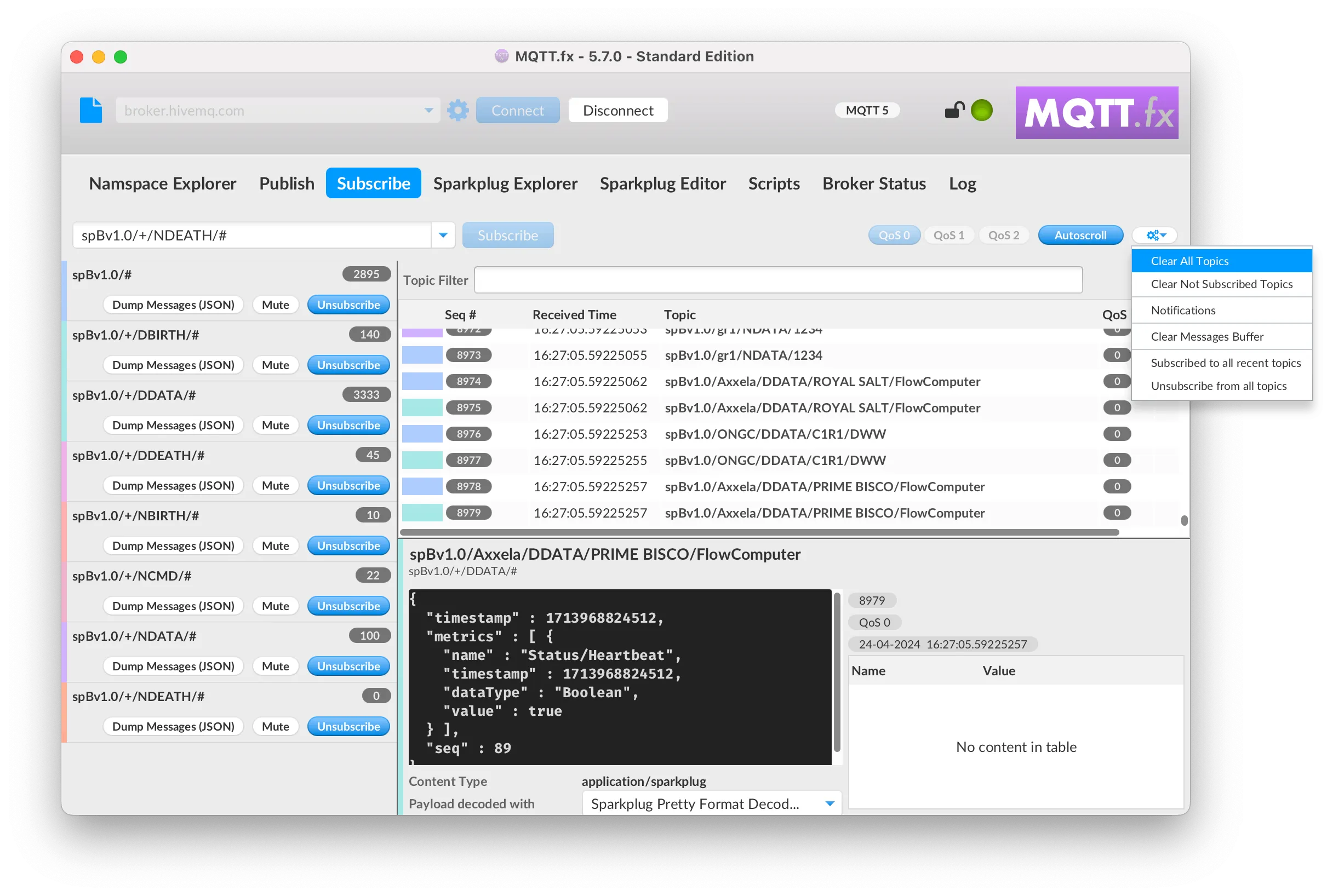
| Option | Does |
|---|---|
| Clear All Topic | Clear subscribed topics history |
| Clear Not Subscribed Topics | Clear on topics from history, that are currently not |
| Clear Messages | Clear received messaged buffer |
| Subscribe to all recent topics | Subscribe to all topics in history with one click |
| Unsubscribe from all topics | Unsubscribe from all current topics with one click |
Also, the QoS can be chosen on subscriptions. But there is a difference to the “publish” QoS. QoS on subscription sets the maximum quality of service to subscribe to the topic(s). Messages published at a lower quality of service will be received at the published QoS, rather than subscribed QoS. Messages published at a higher quality of service will be received using the QoS specified on the subscribe.
Show only lastest option shows only the last received message per topic.
When Notifications is selected, Desktop notifications on received messages are turned on.
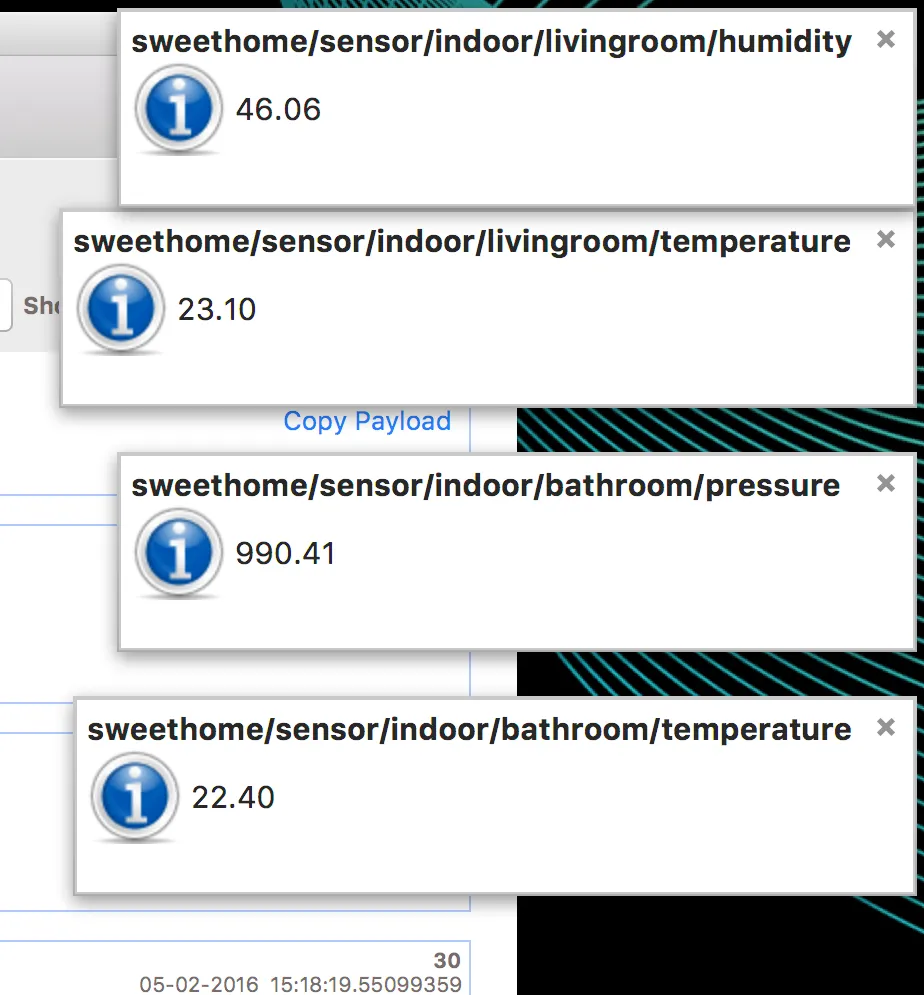
When “Use dynamically scaled fonts” is enabled in the setting, MQTT.fx tries to auto-scale the display of the message body/payload in the received messages view.
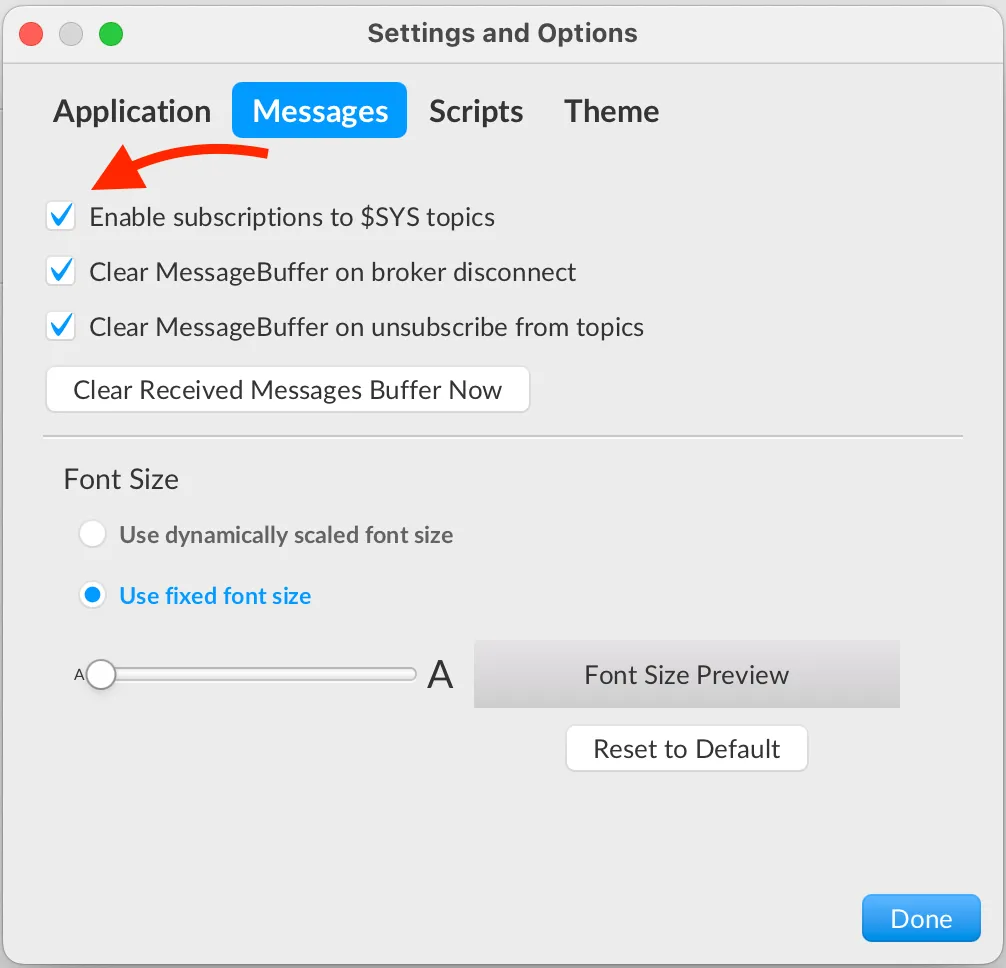
However, it is also possible to set a fixed font size for the message rendering here.
Topics of received messages can be copied when marked with CMD + C (Mac) or CRTL + C

In case the message body is multi-lined the first line is rendered with the ending “…” and there is a toggle to expand the message:
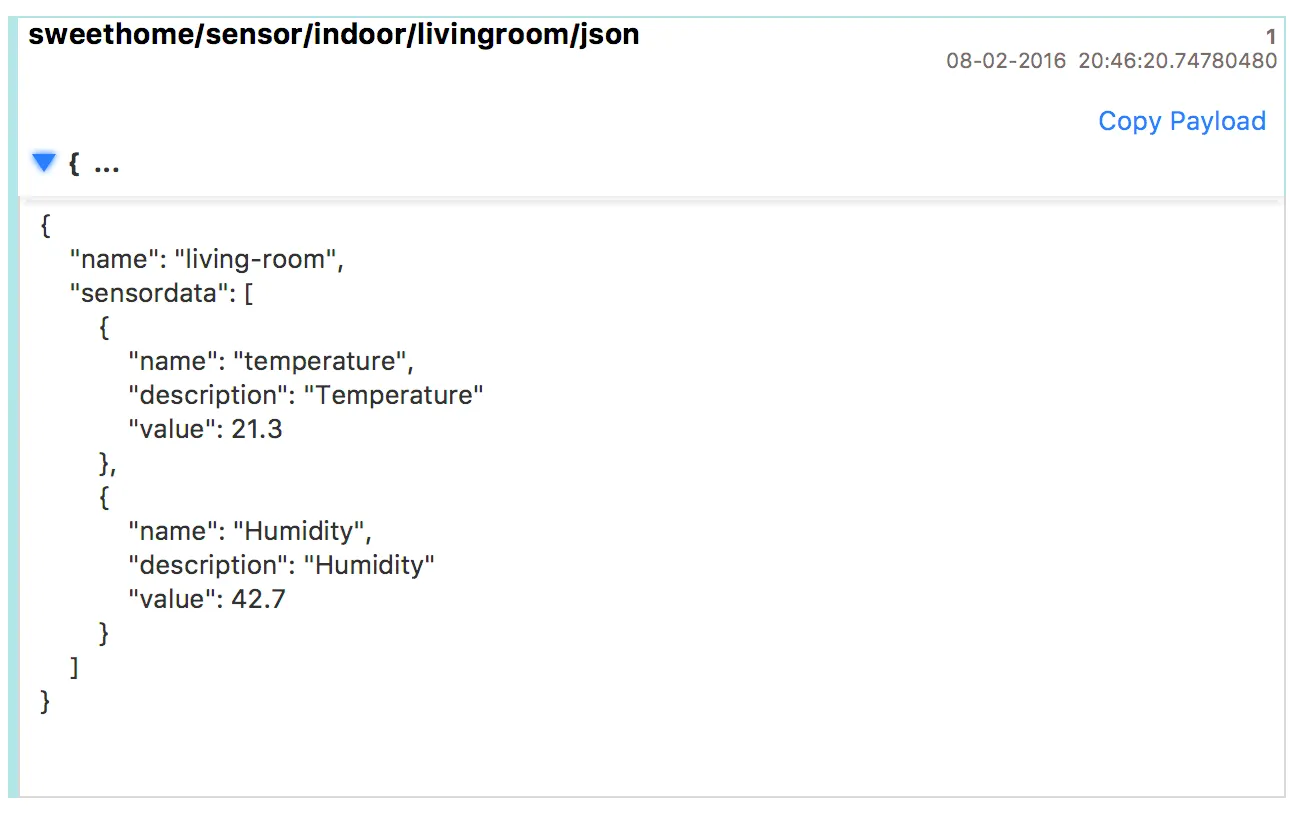
When subscribed to wildcard topics the matching pattern is displayed in light gray below the full topic of the message:
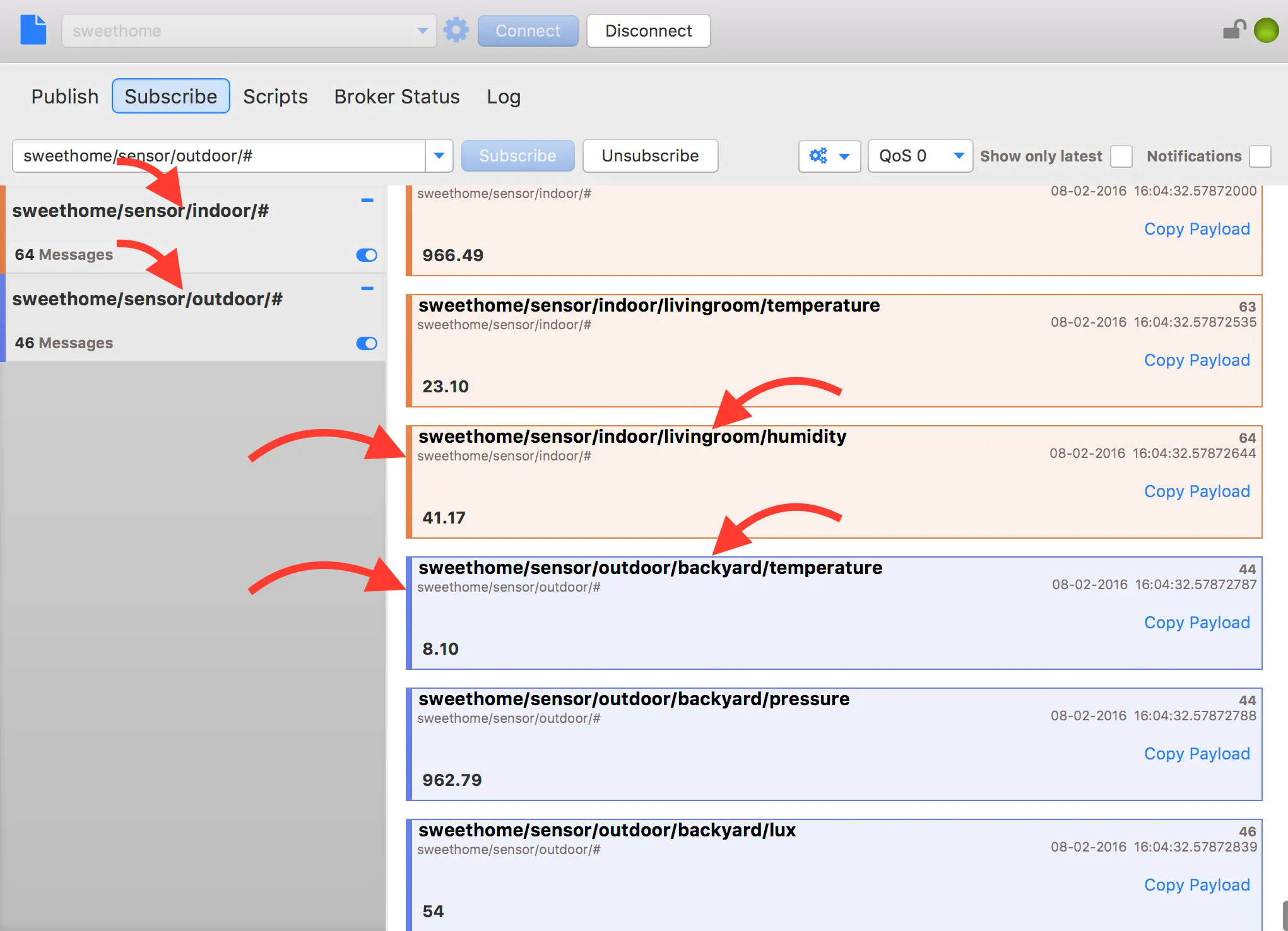
Scripts
A short intro, about scripting with MQTT.fx can be found here:
Scripts can be easily made available for execution via the UI. At the start, MQTT.fx scans a folder named “scripts” located in the MQTT.fx working directory. The location of this directory differs per OS:
Mac OSX
[USER_HOME]/Library/Application Support/MQTT-FX/scripts
Windows
[USER_HOME]\AppData\Local\MQTT-FX\scripts
Linux
[USER_HOME]/MQTT-FX/scripts
In case this folder does not exist it is automatically created by MQTT.fx containing some default/demo scripts.
To be found by MQTT.fx scripts must follow the naming convention: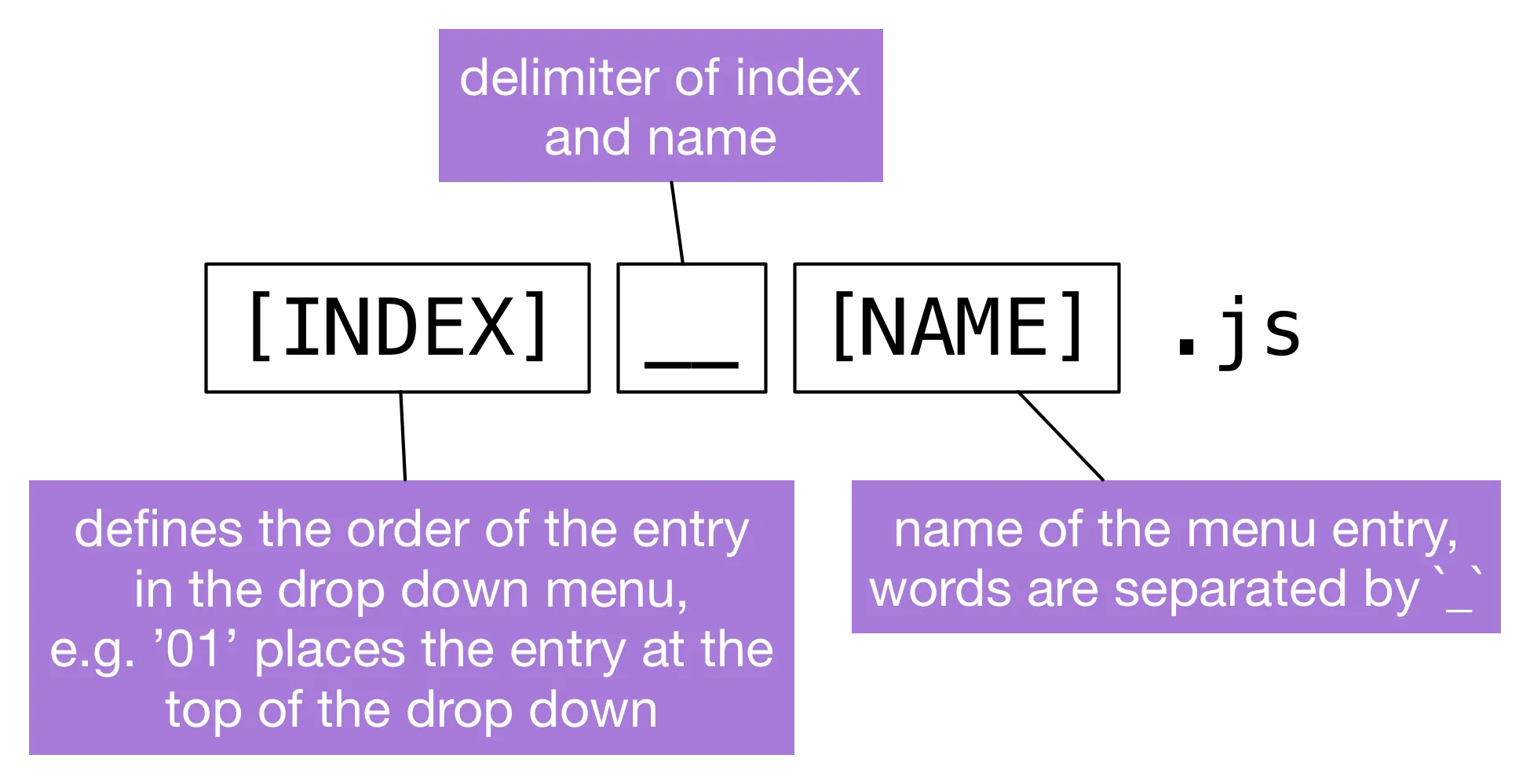
Following this convention, files in the “scripts” folder are names like this:

… and the drop-down menu in Scripts tab is shown like this:
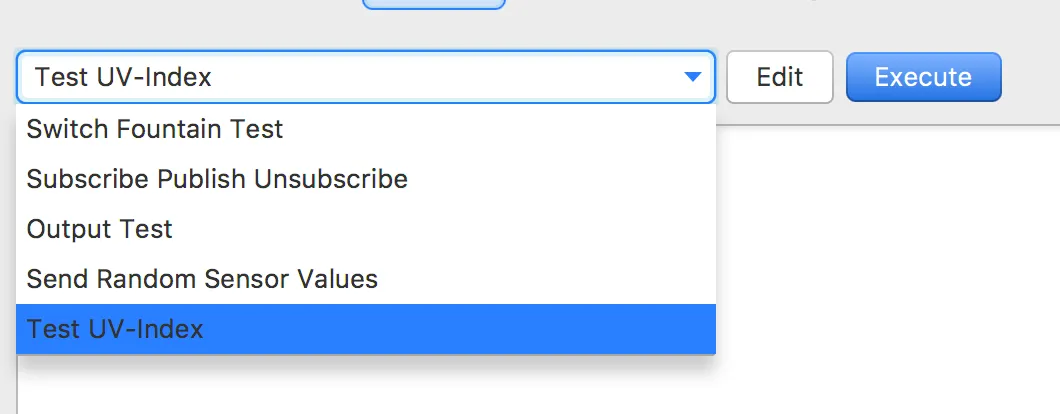
Scripts can be easily edited instantly by clicking on “Edit”. The default editor assigned to “*.js” files will be opened to edit the script. Scripts are loaded prior to each execution thus changes are taking effect when the edited script is saved. It is very easy to play with scripts playing the edit-save-execute game.
If the system default editor for the JavaScript should not be used for editing MQTT.fx scripts there is a setting option to define a certain editor:
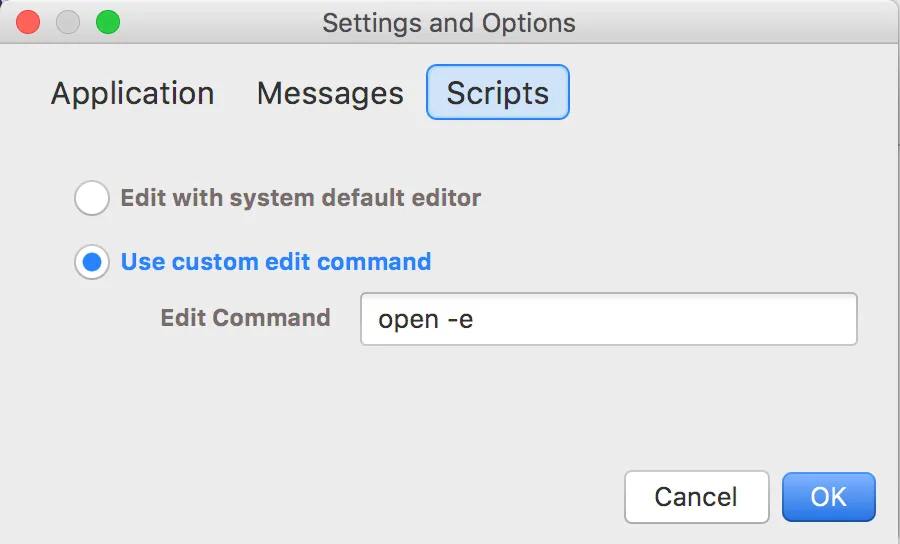
Broker Status
As per default, it is not meant to subscribe manually to $SYS/# topics. There is an option to bypass this restriction though. Open the Preferences/Settings and

mqttfx-config.xml
The application configuration file is located in the default working directory (see section “Scripts”). Basically, there is no need to edit this file as MQTT.fx is taking care. But in case of issues, e.g. on application start “runSetup” could be set to “true” manually. If this file is broken or missing, MQTT.fx creates a new fresh default configuration for you at the application start.
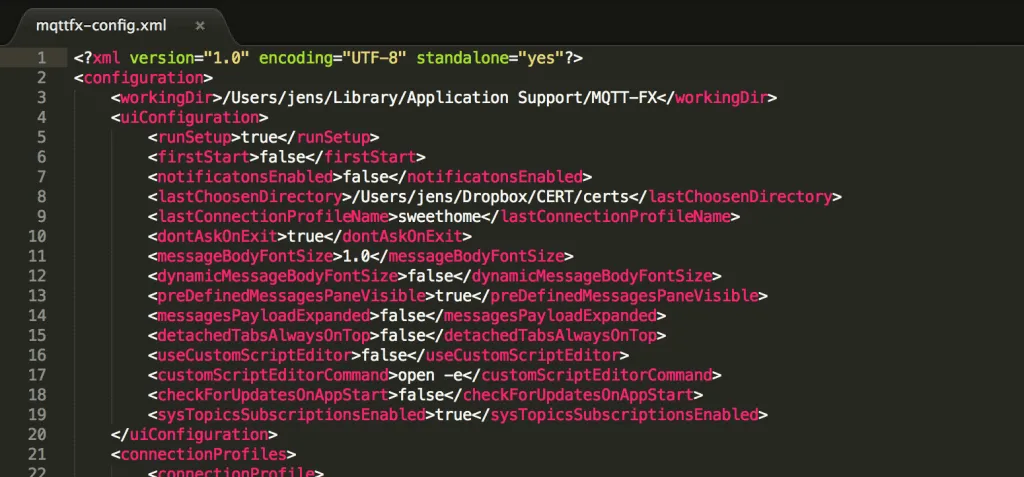
Watch our webinar Debugging MQTT Client Communications With MQTT.fx and HiveMQ Cloud to see how to use MQTT.fx for testing, simulating, and debugging MQTT communications with HiveMQ Cloud, and without writing any code.

Jens Deters
Jens Deters is the Principal Consultant, Office of the CTO at HiveMQ. He has held various roles in IT and telecommunications over the past 22 years: software developer, IT trainer, project manager, product manager, consultant, and branch manager. As a long-time expert in MQTT and IIoT and developer of the popular GUI tool MQTT.fx, he and his team support HiveMQ customers every day in implementing the world's most exciting (I)IoT UseCases at leading brands and enterprises.
